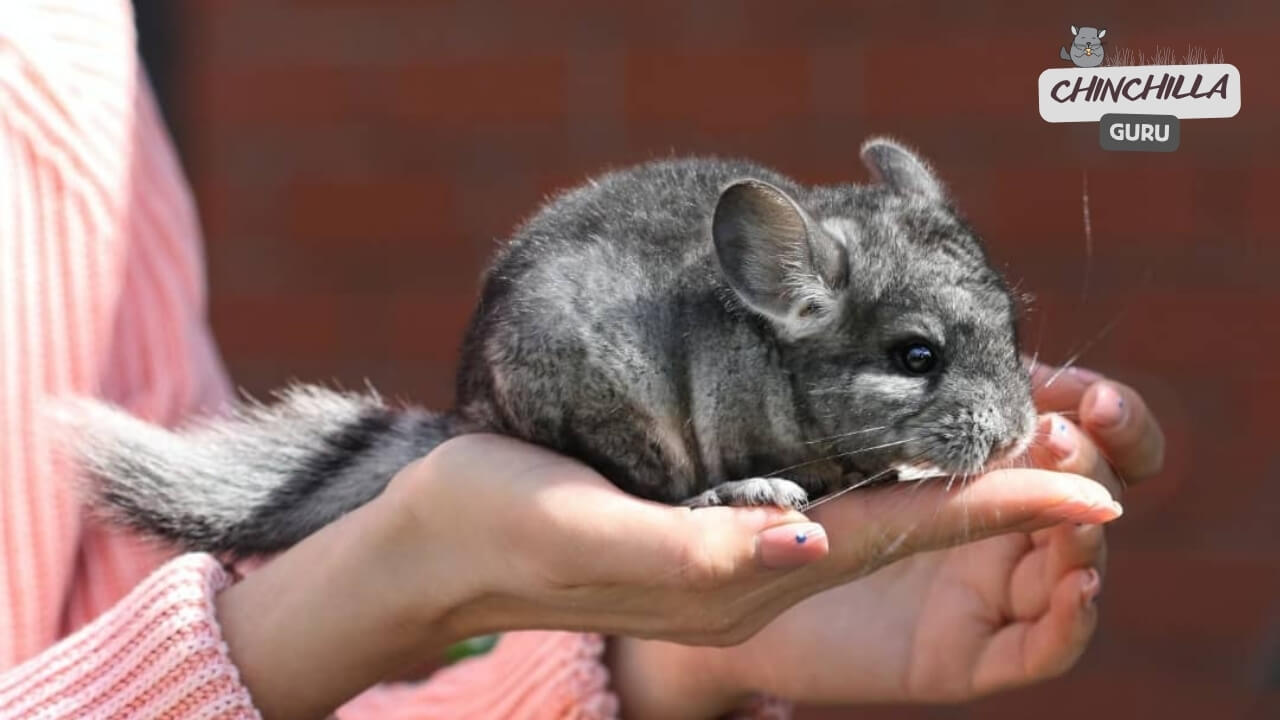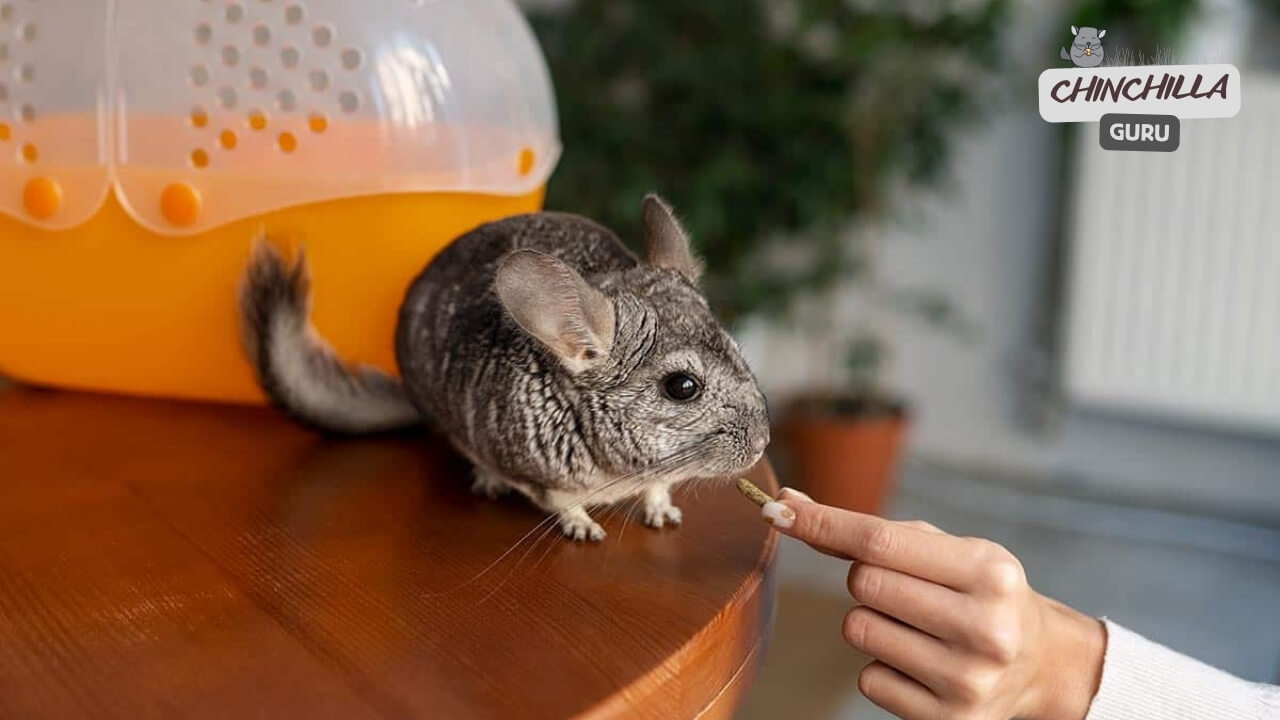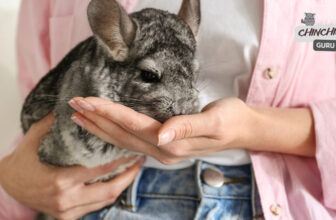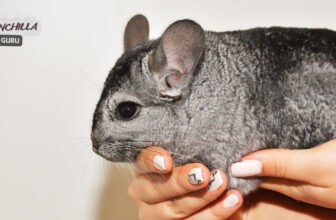
If you’ve recently brought home a chinchilla or if you’ve had one for a while and are looking to strengthen your bond, you’ve come to the right place.
As an experienced chinchilla owner, I have learned valuable techniques and tips through my personal experience with my two chinchillas, Pixie and Trixie.
In this article, I will share with you the steps, strategies, and personal anecdotes on how to bond with your chinchilla.
So, let’s dive in and discover the best ways to build a loving and trusting relationship with your chinchilla!
Why is Chinchilla Bonding Important?
Chinchillas are very social animals that love being with other people. To keep our chinchilla happy and healthy, we need to form a strong bond with it.
Chinchilla bonding is the process of forming a deep and trusting connection between us and your furry friend. It involves gaining their trust, making them feel safe, and creating positive associations with us as their caregiver.

We can build a trusting and loving friendship with our chinchilla that will last a lifetime by getting to know it. Bonded chinchillas are also known to be healthier and happy, which is good for both us and our furry friend.
Bonding is also crucial for a happy and well-adjusted chinchilla, as it helps them feel more comfortable and secure in their environment.
Companionship for Your Chinchillas
We should not keep chinchillas alone because they are very social animals. Single-sex pairs give them company and a place to snuggle up during naps. So I kept two female chillchinas, Trixie and Pixie.
Getting a chinchilla or finding a new home for one should be done at the same time, so the animals can get along.
Starting with two chinchillas is best because introducing them to each other later can be hard.
How to Get Your Chinchilla to Like You?
It takes time, care, and consistency to get a chinchilla to like you. Chinchillas can be scared at first, like my furry friend Trixie, and it could take them weeks to trust you enough to let us pick them up.
The best things we can do for your chinchillas are to move slowly, be patient, and play with them at the same time every day. Chinchillas remember things for a long time, just like elephants do.
If we accidentally catch or grab one of them, it could ruin your chances of becoming friends with it.
First Days
For our chinchillas, the first few days in a new place can be stressful. Before we go up to them, we should give them time to get used to their settings. Keep in mind that chinchillas are usually busier at night and in the evenings.
When we feed them or change their water, move slowly and straight toward their cage. Talk to them in a soft, calming voice, but don’t touch them at first. While we’re still separated by cage bars, let them get used to hearing our words.
Sit in a chair next to the cage and be quiet to start growing trust. Give our chinchillas a treat or a food pellet through the bars if they come over to see what we’re doing. They love raisins as a treat, but don’t give them more than one a day.
We can split them in half to spread them out. Doing the same thing every night at the same time will help our chinchillas look forward to when we come home.
Palm Feeding
Once we’re comfortable feeding our chinchillas through wires for a few days, we can move on to hand feeding. Put our hands on the floor of the cage, palm up, and open the door.
Chinchillas should be able to come up to our hands on their own. They might sniff our fingers, run off, and then come back.
Chinchillas are jumpy and interested, and we should reward them every time they behave well. Our chinchillas will get used to being around us over time.
We should be careful and gentle with our chinchillas once they trust us enough to let us take them out of their box.
Use both hands to support their whole body weight. Put one hand behind them to keep them from moving away and the other hand under their body.
Make sure they are safe against our chest or on our shoulder, and let them look behind us.
Don’t grab their tail, because it could break off, and be soft so they don’t let out clumps of fur as a natural way to protect themselves.
Hand-Feeding and Gentle Strokes
Once our chinchilla is comfortable taking treats from our hand, gradually transition to hand-feeding their regular food pellets. This further strengthens the bond and reinforces positive associations.

As they eat from our hand, gently stroke their back or chin using our other hand.
Be gentle and take cues from our chinchilla’s response. Some chinchillas enjoy being stroked, while others may prefer to be left alone.
Quick Tips for Bonding with Your Chinchilla
To further facilitate the process on how to bond with a chinchilla, here are a few extra pointers:
- Feeding chinchillas a lot of hay helps wear down their teeth.
- Make sure your chinchillas are comfortable by providing them with a peaceful and quiet space.
- Reward appropriate behavior with positive reinforcement, such as praise and treats.
- Chinchillas are most active in the late afternoon and early morning, so that’s when you should spend the most time with them.
Common Challenges in Bonding
Bonding with a chinchilla can sometimes present challenges. It is important to recognize signs that our chinchilla may not be enjoying the bonding process. Some challenges we may experience in bonding include:
- Aggressive behavior, such as biting or aggressive vocalizations
- Excessive hiding and avoidance of interaction
- Frequent attempts to escape or avoid handling
- An overall lack of interest or responsiveness
If you observe any of these signs your chinchilla doesn’t like you, it is essential to reassess your approach and consider alternative bonding techniques.
Each chinchilla is unique, and it may take time to find the best method that suits their individual personality.
Recognizing Signs of Affection
To form a strong bond with our chinchilla, we must learn to trust and understand it. If our chinchilla is friendly toward us, it will show us these signs, like my chillchina at first:
- As we draw near, they eagerly approach the cage openings, displaying their natural curiosity and eagerness.
- They will approach us voluntarily and let us pet or scratch them where they feel most comfortable.
- As a form of showing affection and comfort, they may nibble on us or groom themselves.
- They will happily play and explore right next to us, rather than run away.
- While playing, they will climb on us to show that they trust us and want to be with us.
- When we’re in the vicinity, they’ll make cheerful squeaking noises or quiet vocalizations.
Keep in mind that signs your chinchilla likes you are all different depending on each one. Pay close attention to our chinchilla and learn its unique quirks and preferences.
FAQ
Chinchillas are social animals, so it’s best to keep them in pairs of one gender to keep them company. But some chinchillas might not like being around other chinchillas. If you choose to keep your chinchilla by itself, you must make sure it has lots of mental and physical activities to keep it from getting lonely or boring.
Male and female chinchillas shouldn’t live together in the same cage unless you want to breed them. Chinchillas have strong desires to breed, and mating without being watched can cause stress, aggression, and health problems.
Chinchillas should be introduced to each other slowly and carefully so that they don’t act aggressively or get hurt. The first place to meet can be a neutral area, like an empty cage or play area. Keep a close eye on the interaction and pay attention to their body language, such as how they mount and chase to show authority. If the chinchillas become more violent, separate them and try again in a week.
It could take weeks or even months for some chinchillas to fully trust and bond with the people who care for them. Because every chinchilla is different, the mating process should be based on what they want and need.
To begin, give them plenty of time to get used to their new surroundings and feel at ease there. Reward good behavior with treats and gradually increase the amount of contact as they trust you more. Don’t rush through the process, and always value your chinchilla’s space and level of comfort.
Conclusion
Bonding with your chinchilla is a rewarding journey that requires time, patience, and understanding. By implementing the techniques and tips shared in this guide, you can cultivate a strong and trusting relationship with your furry friends.
Remember to always respect their individual personalities and preferences, and adjust your approach accordingly.
Building a bond takes time, but the love and companionship you will receive from your chinchillas will make the journey worthwhile.
I hope this comprehensive guide has provided you with valuable insights and practical tips on how to bond with your chinchilla. Enjoy the journey of building a strong bond and creating lasting memories with your furry friend!




